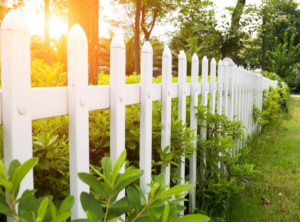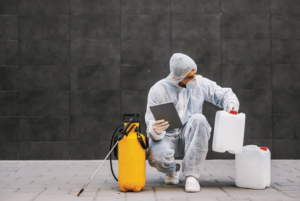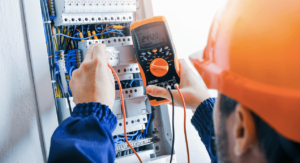Pest Control involves preventing and controlling unwanted organisms. This may be done by removing them, reducing their numbers to acceptable levels, or destroying them.
Natural forces, such as climate and natural enemies, influence pest populations. Natural barriers, such as plants and trees, also prevent pests from entering or leaving a site. Click https://natureshieldpestsolutions.com/ to learn more.

An accurate pest identification is a critical step in the process of controlling the spread of pests. Knowing the characteristics of a pest is important for proper pest control, as different species may behave differently and require different methods to eradicate them. It is also important to note that a pest’s appearance may change during different stages in its life cycle as it passes from egg to nymph to adult. The correct identification of a pest is essential to ensure that pest control methods are applied at the most effective time in the insect’s life cycle.
In addition to identifying specific pests, it is also important to understand their biology and ecology. This will help identify the most effective ways to control them without the use of hazardous chemicals. For example, knowing that a certain type of insect breeds in certain conditions can allow museum staff to use traps and bait in a way that will minimize the risk of poisoning collection items.
The first step in identifying a pest is to look at it closely. Pay particular attention to its shape, size and color. Also, consider where it is located and what else it is surrounded by. For example, if a pest is found in or near a plant, it is likely feeding on that plant, which could be a sign that the plant requires additional care.
A physical specimen of the mystery pest can be submitted to MMPC’s free Pest ID Center, where entomologists will provide results and suggestions for treatment. If a problem is suspected, customers should always contact the Pest ID Center prior to applying any pesticides.
Increased sightings of pests are a good indication that it is time to call for professional pest control. Ignoring increased pest sightings can lead to a full-blown infestation, which will be more expensive and difficult to resolve. The best time to call for pest control is at the first signs of a problem, such as ants marching across a counter, cockroaches scuttling under a fridge or mice running along baseboards.
Prevention
Prevention involves removing the conditions that attract pests. This may involve reducing access to food, water and shelter by caulking cracks or gaps in walls, using door sweeps and sealing expansion joints. It may also include keeping food in airtight containers and storing garbage regularly. It is also important to clean up areas to remove sources of moisture, such as puddles and standing water.
In addition, prevention can include eliminating conditions that promote the growth of pests, such as crowded or overcrowded plantings. It may include thinning or destroying crop residues and removing weeds from fields before harvesting. This practice reduces the amount of chemicals needed for control and helps to conserve soil moisture.
The need for pest control is assessed through a process called monitoring, which consists of searching for and identifying pests, and assessing damage and the impact of the pests. This information is used to determine the best suppression strategy for each pest, whether that be chemical or non-chemical. Monitoring also allows for the evaluation of the success or failure of a suppression tactic, informing future prevention and avoidance strategies.
Besides being annoying or damaging, some pests are actually dangerous to human health. They can carry disease-causing bacteria, such as fungi, viruses or intestinal parasites, which can contaminate surfaces and foodstuffs. Some can also sting or bite people, such as bees, wasps and cluster flies. Others stain or irritate fabrics, such as bed bugs and pine seed moths.
Prevention of pests is an integral part of Integrated Pest Management (IPM), which is the preferred method for managing a pest problem. It focuses on reducing pest numbers and damage to an acceptable level with the least amount of harm to everything else except the pests themselves. The goal is to achieve this through a combination of tactics, including cultural, biological and chemical controls, in an attempt to find the most effective solution and to minimize environmental impact. These controls may be applied on a regular basis, such as weekly or daily, depending on the pest and the environment. They should be tailored to the needs of each facility and are often based on a risk assessment, which takes into account a number of factors, such as:
Suppression
Pests can cause damage to people, animals, crops and property. They may also transmit diseases and spoil food. They are often repulsive or obnoxious, and some have toxic effects. They contaminate surfaces, causing them to smell or stain. Some sting or bite, and others carry or spread disease, such as fungi that can cause diseases in humans, animals and plants or bacteria that can contaminate foods and water.
Pest control includes preventive, suppression and eradication strategies. Preventive controls include reducing the supply of pests’ food, water or shelter to reduce their numbers and stopping them from spreading. Eradication is rare in outdoor pest situations, but can be possible in enclosed areas such as gardens, greenhouses and homesteads.
Threshold-based decision-making is common for determining whether pest control actions are needed. The number of pests and their level of damage must be compared to an acceptable threshold before a pest management program is initiated. This threshold will be different for every situation and may vary from season to season. Scouting – regularly searching for, identifying, and assessing pests – is a critical part of a threshold-based pest management program. This scouting can help to determine the severity of an infestation, pesticide resistance, success of barriers or netting, and activity from a pest’s natural enemies.
The climate and landscape can also influence pest populations. Some landscape features, such as mountains and bodies of water, restrict the movement of many pests. Plant-eating pests may be more concentrated in certain areas than they are elsewhere because of the availability of their host plants, and weather conditions – such as rainfall, temperature, day length and humidity – affect plant growth and insect activity.
Other natural factors can also suppress pests, including predators, parasitoids and disease organisms. Birds, reptiles, amphibians and fish often feed on or kill pests. Some fungi and other pathogens also suppress pest populations by attacking or destroying them or by competing for the same resources as the pests. Similarly, other organisms that feed on the same food sources as pests or on parts of them – such as nematodes and viruses – can significantly reduce their numbers.
Eradication
Eradication is reducing the number of pests to a level that is acceptable. The goal of eradication may be difficult or impossible to achieve, but it is one way to determine the need for pest control. Eradication may be necessary in indoor situations, such as health care and food processing facilities, where zero tolerance is required for bacteria.
Preventive controls, such as crop rotation and use of soil amendments to improve fertility, can help reduce the need for chemicals in many cases. In other instances, methods such as mulching around sun-loving plants to block out light from weed seeds and planting attractive blooms and fruit-producing shrubs to attract insect predators can be used to prevent pest problems without the need for chemical intervention.
In general, the best strategy for preventing a pest problem is to provide a better environment that does not attract or support it. This can be achieved by using soil management techniques to encourage desirable organisms and by providing habitat that discourages or deprives organisms that are a nuisance, such as birds, insects, mammals, or fungi.
The role of natural enemies (predators, parasites, or disease organisms) in controlling pests is often overlooked. These organisms are an important part of a healthy ecosystem, but they can be disrupted by human activity. When they are disrupted, they cannot keep the population of pests in check. When introduced insects, such as Japanese beetles or gypsy moths, come into an area that has few of their natural predators, they can quickly become a major problem.
Another reason to minimize the need for chemical control is that it can lead to the development of resistance in the target pest. This can occur when a particular pesticide is used repeatedly or when it is used in the same field or area over and over. Rotating pesticides, or applying them at different times of the year, can help to reduce the opportunity for resistance to develop.
The term “pest” is somewhat misleading, because it refers to only some organisms. Most organisms are not pests, and the need for pest control depends on whether they cause significant damage. It is also important to note that the damage caused by a pest may be as much psychological or emotional as physical.








